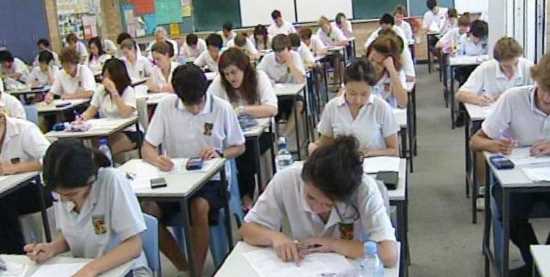New PISA results confirm decline in Australian educational averages
Melbourne, December 6: “Two sets of independent international test results released in the past week show that Australia’s education system has serious deficiencies,” Centre for Independent Studies (CIS) senior research fellow Dr Jennifer Buckingham said.
Last week, results released from TIMSS 2015 showed no change in Maths and Science scores for Australian students since 1995, while other countries have improved; leading to a slide in our international rankings.
This week’s PISA 2015 (Program for International Student Assessment) results are worse – the performance of Australian students in Reading, Maths and Science has significantly decreased over the past 15 years.
Dr Jennifer Buckingham, who is also director of the FIVE from FIVE reading project said that “Rankings are interesting but this is not the World Cup.
“The trend in Australia’s own performance over time is more important, and unfortunately the trend is very clearly downward,” she said.
The decline in Reading and Maths scores is the equivalent of one year of learning, according to the reports from the Australian Council for Educational Research.
Victoria ahead of international average: James Merlino
Victorian students are performing above the international average in Science, Reading and Mathematical Literacy, according to Victorian Education Minister James Merlino .
“The latest PISA results show Victorian students are improving in maths, science and reading compared to students in other Australian states.”
Released every three years, the PISA report on comparison of 15-year-old students in OECD countries showed that scores for Victorian students are above the OECD average and have also improved nationally since the last assessment in 2012.
Victoria has improved from fifth place in Maths and Science to third place, after the ACT and Western Australia. In Reading, Victoria is ranked second, equal with Western Australia, after the ACT.
The Victorian Government has set targets to increase the number of Year 9 students excelling in Scientific Literacy by 33 per cent by 2025, and 25 per cent in Maths and Reading.
“We know that 75 per cent of future jobs will require STEM subjects, that’s why we’re giving our teachers and schools the skills and resources they need to make Science and Maths more interesting and relevant for students,” Mr Merlino said.
The plan includes changing the way STEM subjects are taught so they are exciting and relevant to all students, and investing $128 million to build ten new Tech Schools in 2017 and 2018, specialising in teaching STEM subjects and employment skills to secondary school students.
However, key results for Australia point to a Stagnating Downward Trend:
Reading: Mean score has significantly decreased since 2000 (down 25 points)
61% of students achieved the National Proficient Standard
Maths: Mean score has significantly decreased since 2000 (down 30 points)
55% of students achieved the National Proficient Standard
Science: Mean score has significantly decreased since 2006 (down 17 points)
61% of students achieved the National Proficient Standard
“The deterioration in Australia’s performance is because we now have more low performing students and fewer high performing students,” Dr Buckingham clarified.
In Reading, proportion of low performers grew from 12 per cent in 2000 to 18 per cent in 2015. At the same time proportion of high performers fell from 18 per cent in 2000 to 11 per cent in 2015.
Mathematics has witnessed far worse outcome – the proportion of high performers almost halved from 2003 to 2015, from 20 per cent to 11 per cent.
But, giving some hope to the shoddy results, Dr Buckingham said that “other countries, most notably the much-vaunted Finland, have also experienced significant declines, showing how cautious we must be about making simplistic country comparisons to guide policy. PISA data is very useful but it must be evaluated carefully.
“One finding that stands out across many countries is that teacher-directed instruction is related to higher mean scores, while inquiry-based learning approaches are associated with lower mean scores,” revealed Dr Buckingham, who is also the author of Keeping PISA in Perspective.
In Australia, inquiry-based approaches are favoured which evidently needs to be revised in the light of PISA and other evidence showing the greater effectiveness of teacher-directed, explicit instruction.
COMPARING TIMSS & PISA
TIMSS and PISA are different in nature and purpose: TIMSS assesses curriculum content knowledge while PISA assesses application of this knowledge to realistic problems.
| TIMSS
Released 29 Nov 2016 (8pm) (Trends in International Maths and Science Study) |
PISA
Released 6 Dec 2016 (9pm) (Program for International Student Assessment) |
|
| Year of assessment | 2015 | 2015 |
| Subjects | Maths & science | Reading, maths, science, problem-solving |
| Skills | Curriculum-based
Assesses knowledge and competencies |
Skills-based
Assesses application of knowledge to ‘real life’ situations |
| Age of students | Year 4 & Year 8 | 15-year-olds |
| Started | 1995 | 2000 |
| Frequency | Every 4 years | Every 3 years |
| Number of countries | 47 in Year 4; 39 in Year 8 | 72 countries |
Ramakrishna VenuGopal
Similar Posts by The Author:
- The Untold story of the ANZAC-India friendship
- Australia Post – new performance standards from 15 April
- Premier’s department fighting the release of SECRET hotel quarantine documents
- Vic Gov funds 13 programs that help international Students
- Nationals call for more funding to fight rising crime rates in regional Victoria

